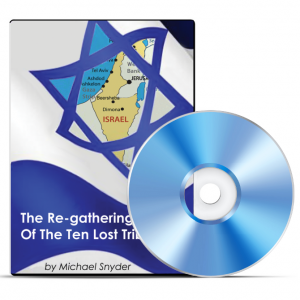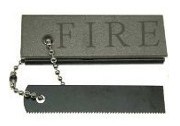 Those who live in northern climate zones understand the challenges of a power outage when freezing temperatures threaten to turn us into human Popsicles. The most prudent of us have prepared for the howling winds and winter storms that can take down power lines for days at a time. But what about newbies who’ve never experienced single-digit temperatures, or those who know better, but their “back-up” plan consists of fleeing to a Motel 6 in hopes they planned ahead for an emergency? It wasn’t until friends recently pulled the plug on city life to relocate north that the subject of winter survival came full circle. It started with a simple question. “What’s your advice on preparing for winter?” In no time, I’d replied with several pages of advice. Not fair, really. Not when they were knee deep in unpacked boxes with weeks of decisions facing them like where to put Aunt Martha’s painting, and asking, “WHY did we bring that stupid couch…it doesn’t fit in the living room!” But they had asked for advice on surviving the coming winter and preparedness in an unforgiving climate deserves special attention.
Those who live in northern climate zones understand the challenges of a power outage when freezing temperatures threaten to turn us into human Popsicles. The most prudent of us have prepared for the howling winds and winter storms that can take down power lines for days at a time. But what about newbies who’ve never experienced single-digit temperatures, or those who know better, but their “back-up” plan consists of fleeing to a Motel 6 in hopes they planned ahead for an emergency? It wasn’t until friends recently pulled the plug on city life to relocate north that the subject of winter survival came full circle. It started with a simple question. “What’s your advice on preparing for winter?” In no time, I’d replied with several pages of advice. Not fair, really. Not when they were knee deep in unpacked boxes with weeks of decisions facing them like where to put Aunt Martha’s painting, and asking, “WHY did we bring that stupid couch…it doesn’t fit in the living room!” But they had asked for advice on surviving the coming winter and preparedness in an unforgiving climate deserves special attention.
The following is a list of what you will need to get through those “grid-down” emergencies and live to tell about it.
Priority #1
A heat source is a must-have in any preparedness plan where temperatures can plummet to unforgivable lows. If you already have a wood heat stove or a fireplace insert, have the chimney flu checked for creosote buildup if you haven’t already done so.
If you are presently dependant upon electric heat or if your home is heated with natural gas that requires electricity to keep the furnace running, look into an airtight wood burning heat stove. They are extremely efficient and will throw off enough heat to keep you toasty warm. If you prefer something that can serve double-duty, why not look in to a wood cook stove? They will heat at least a portion of your home and they offer an alternate cooking method.
When power is down for days instead of hours, it’s time to cordon off a sleeping space nearby a wood-burning device with floor to ceiling blankets. The cordoned off area can be counted on to keep your family comfy, no matter what’s going on outdoors. Make sure to get several cords of seasoned wood (it takes up to one year for wood to season). Add an axe, hatchet and splitting maul to your winter preparedness plan and you’ll be prepared to stay warm, no matter what blows your way.
Priority #2
On average, a person can survive without water for two days in temperatures of 120 degrees and ten days in 50-degree weather. Water should always be a top priority. Winter cold can be nearly as challenging as extreme summer heat, as it dehydrates the body as you breath. If you’re fortunate enough to have a well, consider installing a frost-free manual hand pump for a grid-down situation that will render a well pump inoperable. But I should warn you they aren’t cheap. If your budget can’t stand the strain, store water for each member of your family. The bare minimum is 28 gallons per month per person, but this amount does not provide for bathing. If you can’t stand the thought of bathless days, you will want to store more.
Those who are on municipal water will fare better during a winter storm that takes the grid down. Water districts routinely have battery and generator back up for emergencies. But before you breathe a sigh of relief over this “out clause”, know that most water plants are emergency-ready for up to three days. After that, you’re on your own. Be sure to store the recommended water noted above.
In a situation where the toilet won’t flush, you can dump water in the toilet bowl to manually flush it as a temporary solution. From there, it doesn’t hurt to provide for an inexpensive camp toilet, especially for those who do not have an abundant water source.
It is possible for those on municipal water to experience sewage back up when the water plants emergency back-up batteries and generators fail. This scenario is dependant upon gravity feed. The only way to know for sure if this might pose a problem for your area would be to call your municipality.
For those with a septic system, there’s good news! Back up will not be a problem and you can expect normal drainage. The exception is for those who depend upon sump-pumps to gravity feed belowground levels of the home.
Priority #3
When the power goes down, so does your ability to cook. There are several ways to address this issue. MRE’S are available with heating jackets that will provide no-fuss meals. They are more expensive than simple canned food, however. If your budget has little wriggle room, consider putting aside caned meals like chili and stew. Build from there with canned fruit, powdered milk, cereals and comfort foods that your family enjoys.
Don’t expect to fill up an empty pantry after a storm blows through. Grocery stores no longer carry back stock and are dependant upon routine deliveries to restock their shelves. In any emergency situation, staples on the grocer’s shelves will disappear within 72-hours or less. Now, before the harsh realities of winter sets in, is a good time to tuck away what you’ll need when Mother Nature decides to get temperamental.
If your sensibilities gravitate more towards a long-term preparedness plan, bulk food storage and an alternate cooking method such as a camp stove are must-haves.
Priority #4
Lighting should be provided for. Kerosene or oil lamps will allow for task lighting. Make sure to store a replacement chimney, wicks and plenty of lamp fuel, so no mater how long the power is out you will still be able to light the interior of your home. Store fuel away from the home and water heaters or furnaces to avoid fire risk. Long-burning emergency candles are an inexpensive lighting solution. Placed in chimney-style candleholders, they will safely light your home.
When planning for alternate lighting include extra matches to your list and an ABC-style fire extinguisher. With alternate lighting and cooking comes increased fire hazard.
No matter what style of alternate lighting you choose, include a few flashlights and extra batteries for tasks when a lamp wouldn’t be practical.
Priority #5
If you have children, now is a good time to stock up on color books, craft supplies and possibly a few games. Children delight in snow days, and their enthusiasm can be heartwarming at first. But after being cocooned in close quarters for days on end, their natural energy can grow a bit overwhelming. Keep them busy with a few of their favorite things and you wont find yourself wanting to run to your happy place during a full-blown storm.
Priority #6
Okay, I’ll admit that this last item on the priority list isn’t an absolute necessity, but few northerners can resist the call of an ATV (AKA a 4-wheeler). Add a snowplow, and you’ve just solved the problem of transportation and snow removal during a bitter winter storm when your car is hopelessly buried in a snowdrift. If your bank balance refuses to budge for such a luxury, a sturdy snow shovel will get you by.
Preparedness Connect-the-Dots
Preparedness is not unlike a puzzle. Lose a piece, and you’re not going to like the outcome. The best approach is to prepare now, so when those snow days come around, you’ll have the chance to enjoy the down time over a relaxing cup of hot chocolate and a heated game of scrabble.
*****
The preceding was a guest post for Survival by author Barbara Fix.
Visit Survival Diva Blog http://www.survivaldiva.com/ for more information on rural living, gardening, home canning, food storage, and tips on combating skyrocketing food prices.
Survival Diva, Barbara’s preparedness book is available at http://www.survivaldiva.com/ Download for just $7.75









